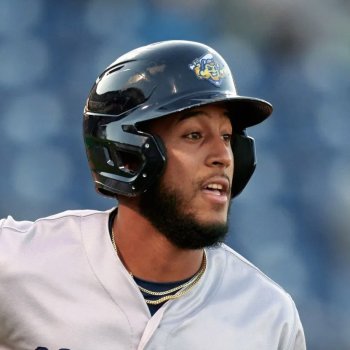title
Twins Video
Earlier this month, Teflon estimated the pitching staff would improve by 73 runs, driven mostly by the Twins free agent acquisitions. These runs would push the Twins' pythagorean win total to 70. Assuming that estimate is accurate, how many more runs would the lineup would need to plate in order to push their Pythagorean record all the way to 90? The answer is 188 runs.
That's a lot of runs. To see if a 188-run offensive improvement had been done recently, I pulled the Runs Scored/Run allowed values from baseball-reference for all teams dating to 1996 (arbitrary cutoff). Turns out, 4 teams improved their offense by 188 or more runs over that period - the 2003 Braves (+199 runs), the 2000 White Sox (+201), the 2004 Tigers (+236), and the 1999 Diamondbacks (+243).
How did they do it? Were the primary drivers players the organizations drafted, free agents, trade acquisitions, waiver pickups, Rule 5 guys?
Below is a position by position look at changes to wRC for each team. (wRC is an estimator of total offensive production in runs, you can read more about it here). Below that, is a tally of wRC improvement by method of acquisition. First up:
the 2002-2003 Braves
The period 2002-2003 in Braves history is extraordinary. The 2003 team outscored the '02 club by a whopping 199 runs, but the pitching surrendered 175 more runs. Both teams won 101 games during the regular season and both teams lost the NLDS in 5 games.
According to wRC, the '03 team saw a 191 run improvement from its position players. That gives us an indication how closely the weighted averages matched reality - very closely, in this case. The best improvements were at 2nd base (+69 wRC) and at Catcher (+55).
The short explanation for the Braves' offensive explosions is "it came from within." At 2nd base, 53rd round pick Marcus Giles took a big step forward. In 2002, his sophomore year, Giles produced just 26 runs over 242 PAs. Jesse Garcia, Keith Lockhart, and Mark DeRosa shared 624 PAs and produced the other 51 wRC's. All together, the bunch was worth 77 wRC. The next year, Giles took over the lion's share of PAs and was worth 113 wRC all by himself. 2003 would be the best season of his short career.
In 2002, catching was done by committee - Henry Blanco took 24% of PAs and was worth 16 wRC. Javy Lopez took 37%, for 34 wRC, Julio Franco took 37% (47 wRC) and Steve Torrealba took 2% (-1 wRC). Overall the group was worth 96 wRC. In 2003 however, Javy Lopez, signed by the Braves as an amateur free agent in 1987, broke out for a career year - 108 wRC over 495 PAs. He was 32. Blanco, Julio Estrada, and Julio Franco pitched in for 43 wRC more. Overall the position improved by 55 runs.
The rest of the 2003 team saw small offensive improvements across the board - 7 runs at Pitcher (Russ Ortiz had 2 home runs), 2 at first base, 29 at third base (Vinny Castilla improved by 29 runs over 2002 at age 35), and 22 runs in right field where a 34 year old Gary Sheffield had a monster year, producing 142 wRC (which boosted right field production by 22 wRC). Sheffield stands out as one of the few trade acquisitions - after the 2002 season, the Braves shipped out 6th round pick Andrew Brown, 36 year old outfielder Brian Jordan, and 23 year old pitcher Odalis Perez to get him.
The 1999-2000 White Sox
According to wRC, the 1999 White Sox should have scored 784 runs and the 2000 squad should have scored 934 (a 150 run improvement). In reality, the 1999 team scored 777 runs and the 2000 team scored 978. So, there's a pretty sizable variance between the weighted estimator and reality in this case. There are a lot of variables that lead to scoring runs. One of the weaknesses weighting every HBP, walk, single, double, triple, home run, stolen base, and caught stealing the same, is that not all of these events have an equal impact on real games. An obvious example would be triples - hitting one with 2 outs is worth less than hitting one with zero or 1 out. wRC makes no distinction, it weighs them the same.
In any case, where wRC says the 2000 White Sox improved most was at shortstop (+84 runs), DH (+61), and left field (+41). The story behind that improvement has 3 aspects - a trade, a future HoF draft pick, and an amateur free agent signing.
On January 12, 2000, the White Sox traded 33 year old Jaime Navarro and 2nd year pitcher John Snyder to the Brewers for a 32 year old Cal Eldred and 30 year old Jose Valentin. As a result of the trade, 22 year old SS Michael Caruso, a 2nd round pick, was optioned to the minors in 2000 where he stayed the rest of his career (with one exception being a 12 game stint for the Royals in 2002). Valentin took those PAs from Caruso and produced 95 wRC, which was 60 more than Caruso managed in 564 PAs the year before. Journeyman infielder Tony Graffanino pitched in 21 more.
At DH, the Big Hurt. Only he was the Medium Hurt in 1999, when he produced "just" 99 wRC over 590 PAs. But in 2000, at age 32, he was Big again and and put up a stellar 155 wRC's over 707 PAs. Thomas was an organizational guy whom the Sox drafted 7th overall in 1989.
In the spring of 2000, 2nd year waiver pickup Brian Simmons broke his Achiles. He had surgery and missed all of the 2000 season (and pretty much every year after that). This narrowed the Sox's left field options to two - 2nd year amateur free agent pickup Carlos Lee and 27 year old 4th round pick Jeff Abbott. Lee assumed the majority of the at-bats (as he had in 1999), but stepped up his game. He improved by 26 runs over his 1999 season, and Abbott pitched in 29 more over 242 PAs to improve the production by 41 wRC overall.
As for real-world wins, the 1999 team had 75 and in 2000 they had 95, three games better than their Pythagorean W-L in each year.
2003-2004 Tigers
wRC says the 2003 Tigers scored 581 runs, and the 2004 Tigers scored 824. In reality, the 2003 squad scored 591 and the 2004 team scored 827. Very close.
Pythagoras says the 2003 Tigers won 49, and the 2004 team won 79. Reality says they 2003 team won 43 and the 2004 team won 72. In addition to the offensive explosion, Tigers pitching improved to prevent 84 additional runs in 2004. Together the 320 run improvement to their RS/RA differential was 2nd most of any team since 1996. What this shows is just how bad the 2003 Tigers were - their offensive explosion a year later caused no casualties. The starting point was so low that the 2004 team still stunk.
Anyway, the 2004 Tigers saw a number of small improvements. At first, a 26 year old Carlos Pena improved on his '03 performance by 11 wRC. In right field, a 33 year old Bobby Higginson impproved by 9 runs over his 2003 performance. But the lion's share of the Tiger's explosion came from the middle infield and catcher positions. Amateur free agency, free agency, and a trade are behind it.
On January 8, 2004, the Tigers shipped a 23 year old Ramon Santiago, a former two-time Baseball America top 100 prospect, and minor league pitcher Juan Gonzalez to the Mariners for 28 year old shortstop Carlos Guillen. With Guillen at short, 22 year old Omar Infante transitioned from being a utility/backup infielder to the primary second baseman. The two of them combined to produce 169 wRC over 1139 PAs in 2004 - a 79 run improvement.
Brandon Inge caught 100 games for the Tigers in 2003. It would be the last year he spent significant time behind the plate. That offseason, the Tigers moved Inge to a third base/utility role, parted ways with 33 year old Matt Walbeck, and signed 32 year old free agent Ivan Rodriguez to a 4 year $40m contract. Rodriguez caught 125 games the next year for 90 wRC. Overall, the wRC improvement at catcher was 58 runs.
The 1998-1999 Diamondbacks
The 1999 Diamondbacks, like the other three teams, didn't win the World Series. But, they did put together the greatest single season turnaround of a franchise for the period 1996-2013. The DBacks improved their net scoring differential by 379 runs in 1999 (+243 on offense, -136 on pitching). For the offensive side, the story was: a trade, a second trade, and a 3rd trade.
First trade: Dec 28, 1998. The DBacks shipped 22 year old rightfielder and top 100 prospect Karim Garcia to the Tigers for 31 year old Luis Gonzelez. Gonzalez took over in left, displacing a committee of 25 year old David Dellucci, 25 year old Yamil Benitez, 31 year old Bernard Gilkey, 27 year old Brent Brede, and and 28 year old Andy Fox. Gonzalez was worth 131 wRC, a 64 run improvement over the committee that was worth a combined 67 wRC in 1998.
At third, 33 year old Matt Williams improved on his 1998 season by 36 wRC runs. Williams had been acquired by trade prior to the 1998 season that sent Travis Fryman, Tom Martin and cash to the Giants.
With 22 year old Karim Garcia gone to the Tigers, the Diamondbacks moved to fill right field. They shipped 19 year old outfielder Paul Weichard and 26 year old RHP Jason Boyd to the Pirates for 29 year old Tony Womack. Womack moved into the leadoff spot, and was worth 83 wRC in right over 499 PAs.






0 Comments
Recommended Comments
There are no comments to display.